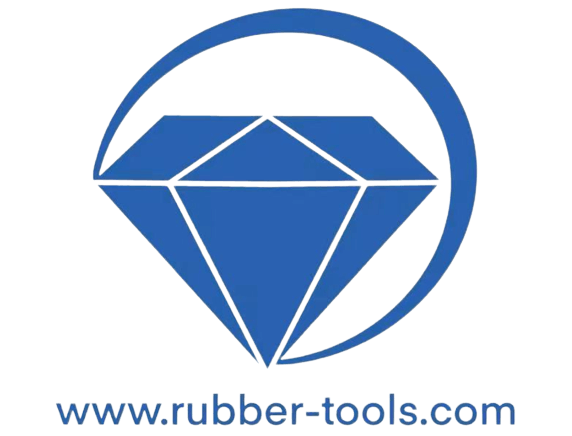Extruded seals play a crucial role in various industries, providing essential solutions for sealing and insulation. In China, the demand for high-quality extruded seals has surged, driven by rapid industrial growth and advancements in manufacturing technologies. This guide delves into the intricacies of extruded seals, exploring their applications, materials, and production processes.
Readers can expect to gain a comprehensive understanding of the different types of extruded seals available in the market. We will discuss their specific uses in sectors such as automotive, construction, and electronics. Additionally, the guide will highlight the benefits of using extruded seals, including durability, cost-effectiveness, and environmental considerations.
Furthermore, this guide will provide insights into the manufacturing landscape in China, examining key players and innovations shaping the industry. By the end of this exploration, readers will be equipped with valuable knowledge to make informed decisions regarding extruded seals, whether for procurement, design, or application purposes.
A Comprehensive Guide to Extruded Seals in China
Hebei Shida Seal Group, HC Seal Strip, and Nangong Letu Automotive Components (all operating under the Hebei Shida Seal Group umbrella) are prominent examples of the robust extruded seal manufacturing industry in China. These companies cater to diverse sectors, offering a wide array of materials, designs, and customization options. This guide delves into the technical aspects and variations within extruded seals, highlighting their applications and key features.
Understanding Extruded Seals
Extruded seals are manufactured by forcing a rubber or plastic compound through a precisely shaped die. This process creates continuous lengths of material with consistent cross-sections. The resulting seals are versatile and cost-effective, particularly for mass production. Their applications span numerous industries, from automotive and construction to marine and industrial sectors. HCsealstrip.com, for example, highlights their extensive mold library and rapid delivery times, emphasizing their manufacturing capabilities.
Technical Features of Extruded Seals
The performance of an extruded seal is heavily influenced by its material composition and manufacturing process. Factors such as tensile strength, temperature resistance, and chemical resistance are crucial for choosing the right seal for a given application. Precision in dimensions is also critical, with tolerances often reaching remarkable levels. Hebei Shida Seal Group, as seen on www.shidarubber.com, boasts decades of experience and advanced manufacturing capabilities, ensuring high-quality products.
| Feature | Rubber (e.g., EPDM, Silicone) | Plastic (e.g., PVC, Polyurethane) |
|---|---|---|
| Tensile Strength | High, varies by material and compound | Moderate to High, varies by material |
| Temperature Range | Wide, depending on material (e.g., -50°C to +150°C) | Varies by material, generally narrower than rubber |
| Chemical Resistance | Excellent, varies by material (e.g., ozone, UV) | Good to Excellent, varies by material |
| Flexibility | High to Moderate, depending on material and hardness | High to Moderate, depending on material and hardness |
| Cost | Moderate to High | Low to Moderate |
Types of Extruded Seals
The variety of extruded seals is vast, tailored to meet the specific needs of different applications. Several common types exist, each with its unique advantages and limitations. Letu Automotive, showcased on www.letuautomotive.com, offers a wide range of these types, demonstrating their expertise in the field.
| Seal Type | Description | Advantages | Disadvantages |
|---|---|---|---|
| Solid Rubber Extrusions | Continuous, solid rubber profiles. | High strength, durability, good sealing performance. | Less flexible than sponge seals, potentially more expensive. |
| Sponge Rubber Extrusions | Porous rubber profiles, often closed-cell for better weather resistance. | Flexible, good cushioning, excellent sealing in some applications. | Lower strength than solid rubber, may compress over time. |
| Dual Durometer Seals | Combines hard and soft rubber for improved sealing and durability. | Good balance of strength, flexibility, and sealing performance. | More complex manufacturing process, potentially higher cost. |
| Push-on Trim Seals | Designed to snap onto existing profiles, often with a bulb for sealing. | Easy installation, good for applications where removal is needed. | Limited customization options. |
| Clip-on Sealing Profiles | Designed to clip onto existing profiles, providing a secure seal. | Secure and reliable sealing, often used in industrial settings. | More complex design, potentially higher cost. |
| U-Channel Seals | U-shaped profiles used for edge protection and sealing. | Simple design, effective sealing, easy installation. | Limited in complex sealing applications. |
Applications Across Industries
The versatility of extruded seals is evident in their widespread use across diverse sectors. The automotive industry relies heavily on extruded seals for weatherstripping, window channels, and door seals. Construction utilizes them for glazing and weatherproofing. Industrial applications range from electrical cabinet sealing to machine component protection. The information on www.shidaprofile.com shows how Hebei Shida Seal Group focuses on automotive applications, but their expertise extends beyond this sector.
Conclusion
China’s extruded seal manufacturing industry is characterized by its scale, technological advancements, and commitment to customization. Companies like those mentioned excel in providing high-quality, cost-effective solutions tailored to specific industry needs. Their expertise and experience ensure that customers receive reliable products for diverse applications.
FAQs
1. What is the difference between EPDM and silicone rubber extruded seals?
EPDM offers excellent weather and ozone resistance, making it ideal for outdoor applications. Silicone excels in high-temperature resistance and flexibility, suited for demanding environments.
2. How are tolerances maintained in extruded seal manufacturing?
Precision dies and advanced extrusion machinery are essential. Regular quality control measures and precise monitoring of the extrusion process ensure tight tolerances.
3. What types of secondary operations are commonly performed on extruded seals?
These include cutting to length, vulcanizing, adding adhesive backing, punching holes, and assembling multiple components.
4. What certifications are important for extruded seal manufacturers?
ISO 9001 for quality management and industry-specific certifications like IATF 16949 (automotive) are crucial for demonstrating compliance and reliability.
5. Can custom extruded seals be designed and manufactured?
Yes, many manufacturers offer custom design and manufacturing services. This allows for tailored solutions to meet specific application requirements and dimensions.
